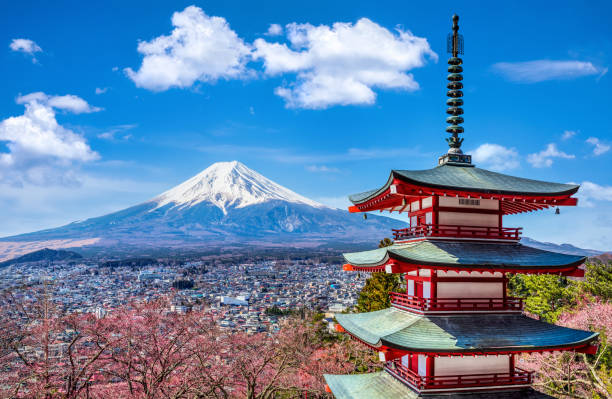You’ve booked your tickets, sorted your accommodation, and probably watched every YouTube video about Tokyo street food. Your excitement is building, your itinerary is color-coded, and you’re already practicing your “arigatou gozaimasu.” But here’s something that might surprise you: the smallest items in your luggage could make the biggest difference between a good trip and an unforgettable one.
I’ve learned this the hard way. My first trip to Japan had me hunting through convenience stores at midnight for things I never thought I’d need. My second trip? Much smoother. Because I packed smarter, not heavier.
The truth is, Japan has almost everything you could want. But some things? They’re either hard to find, surprisingly expensive, or just not quite right for your needs. Let me show you what deserves a spot in your suitcase.

Things to Take with You to Japan
These aren’t your typical “don’t forget your passport” reminders. What I’m sharing here are the items that actually changed how I experienced Japan, based on real situations you’ll face on the ground.
1. A Proper Travel Adapter (Not Just Any Adapter)
Japan uses Type A and Type B plugs, the same as North America. Sounds simple, right?
Here’s where it gets interesting. If you’re coming from Europe, the UK, Australia, or most other parts of Asia, your chargers won’t fit Japanese outlets. And while you might think you can just grab an adapter at the airport, those airport versions are often bulky, expensive, and limited in stock. I’ve seen travelers pay 3,000 yen (roughly $20) for a basic adapter that would cost $5 online.
Get yourself a universal adapter before you leave. The kind with multiple USB ports is even better because you’ll be charging your phone, camera, portable battery, and maybe a tablet all at once. Japanese hotel rooms, particularly in older establishments, often have limited outlets. Some only have two, and one might be occupied by the room’s alarm clock or air purifier.
Here’s something else most people don’t think about: Japan’s voltage is 100V, lower than most countries. Your devices will work fine (most modern electronics handle 100-240V), but they might charge slightly slower than you’re used to. That’s why having a multi-port adapter becomes even more valuable. You can keep everything charging overnight and wake up ready to go.
2. Cash (Yes, Still)
Everyone talks about how technologically advanced Japan is. And it is. But cash is still king in many situations, and this catches visitors off guard constantly.
You’ll find that smaller restaurants, local shops, some temples and shrines, and even certain train stations don’t accept cards. I once stood in a beautiful family-run ramen shop in Kyoto, card in hand, watching the owner politely point to a small sign that said “cash only” in English. The nearest ATM was a 10-minute walk away, and my steaming bowl of ramen got cold.
Bring enough cash to cover at least your first day or two. Plan on carrying around 10,000 to 20,000 yen (roughly $70-140) in your wallet at any given time. This isn’t about being old-fashioned. It’s about not missing out on incredible experiences because the perfect little vintage shop or the best taiyaki stand doesn’t have a card reader.
ATMs in Japan have their own quirks too. Many don’t accept foreign cards, and the ones that do (like those at 7-Eleven, FamilyMart, or Japan Post) have specific operating hours. Some shut down at night. Having cash means freedom to eat where you want, shop where you want, and not stress about finding an ATM at 9 PM when you’re tired and hungry.
3. Comfortable Walking Shoes (Broken In, Not New)
Your feet are going to hurt. That’s not pessimism. That’s just what happens when you walk 20,000+ steps daily through cities, up temple stairs, across train platforms, and through endless shopping districts.
The biggest mistake I see travelers make? Bringing brand new shoes because they want to look good in photos. Then by day two, they’re covered in blisters and spending their evenings with their feet in ice buckets. I watched a couple in Osaka limping through Dotonbori in pristine white sneakers that were literally creating wounds with every step.
Your shoes need to be comfortable AND already broken in. Wear them for at least two weeks before your trip. Walk around your neighborhood. Test them on different surfaces. Make sure they don’t rub anywhere. This matters more than you think.
Also, consider the fact that you’ll be taking your shoes off constantly. Temples, traditional restaurants, some museums, changing rooms, certain hotels, and many homes all require shoe removal. Slip-on shoes or sneakers with loose laces will save you so much time and awkwardness. Nobody wants to be that person holding up a line while wrestling with complicated shoe fasteners.
One more thing: shoe sizes in Japan run smaller. If you have larger feet (typically over US men’s size 10 or women’s size 8), finding replacement shoes can be really difficult. Bring backups or insoles if you need them.
4. Portable WiFi Device or SIM Card
Google Maps will become your best friend in Japan. You’ll use it for train directions, restaurant locations, real-time navigation, and finding those hidden spots that don’t have obvious English signage. Without reliable internet, you’re basically traveling blind.
Many hotels offer WiFi, sure. But what happens when you’re standing at Shibuya Crossing trying to figure out which exit leads to the restaurant you booked? Or when you’re at Tokyo Station (which is basically an underground city), trying to locate the right platform for your bullet train? Hotel WiFi doesn’t help you there.
Portable WiFi devices (pocket WiFi) are incredible. You can rent them at the airport or have them delivered to your hotel. They provide unlimited data for your entire group (usually up to 5-10 devices), and the battery lasts all day. I’ve used them on every trip, and they’ve saved me countless times. The cost is usually around 1,000 yen per day, which splits nicely if you’re traveling with friends or family.
If you’re solo or prefer something simpler, get a prepaid SIM card for Japan. Companies like Mobal, Sakura Mobile, or IIJmio offer tourist SIMs with data packages. Just make sure your phone is unlocked before you leave home. Nothing’s worse than arriving in Japan and discovering your phone is carrier-locked.
The peace of mind alone is worth it. You can check train times on the fly, translate signs with your camera, find emergency services if needed, and share your amazing experiences in real-time.
5. Small Gift Items from Home
Gift-giving is deeply embedded in Japanese culture. It’s called “omiyage,” and it happens everywhere. People bring gifts to hosts, to colleagues after trips, to new friends they meet.
You don’t need anything expensive or elaborate. What matters is the thought and the connection to your home country. Bring small items that represent where you’re from. These could be local chocolates, small flags or pins, postcards from your city, regional snacks, or handmade items.
I’ve given Australian Tim Tams, British tea bags, American hot sauce packets, and Canadian maple candy. Every single time, the response was genuine appreciation. These little exchanges create memorable moments and deeper connections.
Here’s a specific scenario where this matters: if you’re staying at a ryokan (traditional Japanese inn) or if someone invites you to their home, bringing a small gift is expected and appreciated. It shows respect and cultural awareness. Even at business hotels, giving the cleaning staff a small token from your country can brighten their day and yours.
Pack these gifts carefully and keep them accessible. You never know when an opportunity for cultural exchange will present itself.
6. Medication and Prescriptions
Japan has strict pharmaceutical regulations. Medications that are over-the-counter in your country might be prescription-only or even completely unavailable in Japan. Some are actually illegal.
Bring everything you need from home. This includes prescription medications (in their original bottles with labels), pain relievers, allergy medication, stomach remedies, and any specialty items you use regularly. Trying to explain your medical needs in a foreign language while you’re feeling unwell is not an experience you want.
Keep medications in your carry-on luggage, never in checked bags. If you’re bringing prescription medications, carry a letter from your doctor explaining what they are and why you need them. Japan’s customs can be strict, and certain medications (particularly those containing stimulants or codeine) require special approval. Check Japan’s customs website before you pack.
I learned this lesson when I ran out of my preferred antihistamine during hay fever season in Tokyo. The Japanese alternatives worked differently, came in different dosages, and the packaging was entirely in Japanese. A pharmacist helped me, but it took time and stress I didn’t need.
Also, bring a basic first-aid kit. Band-Aids (or plasters), antiseptic wipes, and blister treatments are essential. Your feet will thank you.
7. Reusable Water Bottle
Here’s something that surprises many visitors: Japan doesn’t have a big culture of public water fountains, and buying bottled water constantly adds up fast.
A good reusable water bottle saves money and reduces plastic waste. You can fill it at your hotel in the morning, and Japanese tap water is completely safe to drink everywhere. Some train stations and tourist sites have water fountains, though they’re not as common as in other countries.
During summer, when temperatures soar and humidity makes you feel like you’re walking through soup, staying hydrated becomes critical. A 500ml bottle of water from a vending machine costs about 100-150 yen. If you’re buying three or four daily, that’s 400-600 yen ($3-4) spent on something you can get for free.
Get an insulated bottle if possible. It keeps water cold during those sweltering summer days and hot during winter temple visits. The temperature swings in Japan can be intense, and having your preferred drink temperature available makes a real difference to your comfort level.
Many convenience stores and some restaurants will let you fill your bottle with ice for free. Just ask politely. This small gesture has gotten me through some seriously hot afternoons in Kyoto and Nara.
8. A Day Bag or Packable Backpack
Your main suitcase stays at the hotel. Your day bag comes with you everywhere.
You need something that’s comfortable for all-day wear, big enough to hold your essentials, but not so large that it becomes a burden. I recommend a backpack over a shoulder bag because you’ll be carrying it for hours through crowded trains, up shrine stairs, and across cities. Your shoulders and back will appreciate even weight distribution.
Make sure it has multiple compartments. You’ll need easy access to your wallet, phone, water bottle, and train pass without unpacking everything at a station platform. A water-resistant or waterproof bag is smart too, since unexpected rain happens, and you don’t want your electronics or souvenirs getting soaked.
Here’s something specific to Japan: bring a packable tote bag as well. Many stores don’t automatically provide shopping bags anymore due to environmental regulations. They charge for bags, usually 3-10 yen each. Having your own means you can shop freely without worrying about how to carry things.
Also, coin lockers are everywhere in Japan, and they’re a traveler’s best friend. If you’re doing a day trip from your base city, you can store your day bag in a locker (usually 300-600 yen) and explore with just essentials. Having a packable bag means you can maximize what fits in those lockers.
9. Translation App Downloaded Offline
Technology can fail. WiFi can drop. Data can run out at the worst possible moment. Having an offline translation app is like having a safety net for communication.
Google Translate allows you to download language packs for offline use. Do this before you leave home or while you’re on hotel WiFi. The Japanese pack isn’t huge (around 50MB), and it works surprisingly well for basic communication, reading signs, and understanding menus.
The camera translation feature is particularly brilliant. You can point your phone at Japanese text, and it overlays the English translation in real-time. I’ve used this for restaurant menus, train schedules, museum exhibits, and even washing machine instructions at laundromats. It’s not always perfect, but it gets you 80% of the way there.
Some situations where this became invaluable: ordering at a local izakaya with no English menu, understanding medication instructions from a pharmacy, reading warning signs at hot springs, and communicating dietary restrictions. These moments happen daily, and having the ability to bridge the language gap independently is empowering.
Learn a few basic phrases too. “Sumimasen” (excuse me), “arigatou gozaimasu” (thank you very much), and “eigo ga hanasemasu ka?” (do you speak English?) go a long way. But when phrases aren’t enough, your offline translation app steps in.
10. Wet Wipes and Hand Sanitizer
This might seem basic, but trust me on this one. Public restrooms in Japan are generally clean, but not all have soap or hand towels. Many have hand dryers, some have neither.
Keep a pack of wet wipes and a small bottle of hand sanitizer in your day bag. You’ll use them more than you expect. After eating street food, before eating at parks or trains, after temple visits where you’ve handled coins and ropes, and throughout your general daily adventures.
Japanese culture emphasizes cleanliness, and you’ll notice most locals carrying small towels or handkerchiefs for drying hands. Following this practice shows cultural awareness and keeps you comfortable. Plus, those wet wipes come in handy for quick clean-ups after eating messy foods like takoyaki or yakitori from street vendors.
Here’s an added bonus: wet wipes are perfect for freshening up during long train rides, cooling down on hot days (the individually wrapped ones are especially good for this), and general travel hygiene. They take up minimal space, weigh almost nothing, and solve multiple small problems throughout your trip.
Wrapping Up
Packing for Japan isn’t about bringing everything you might possibly need. It’s about bringing the right things that enhance your experience and solve problems before they start. These ten items have proven themselves essential across multiple trips, different seasons, and various travel styles.
The beauty of being prepared is that you spend less time solving logistical problems and more time actually experiencing Japan. You’re free to wander that quiet neighborhood in Kyoto, stay out late in Osaka, or take a spontaneous day trip without worrying whether you have what you need. That’s the kind of trip worth taking.
Pack smart, travel light, and get ready for one of the most incredible experiences of your life.


